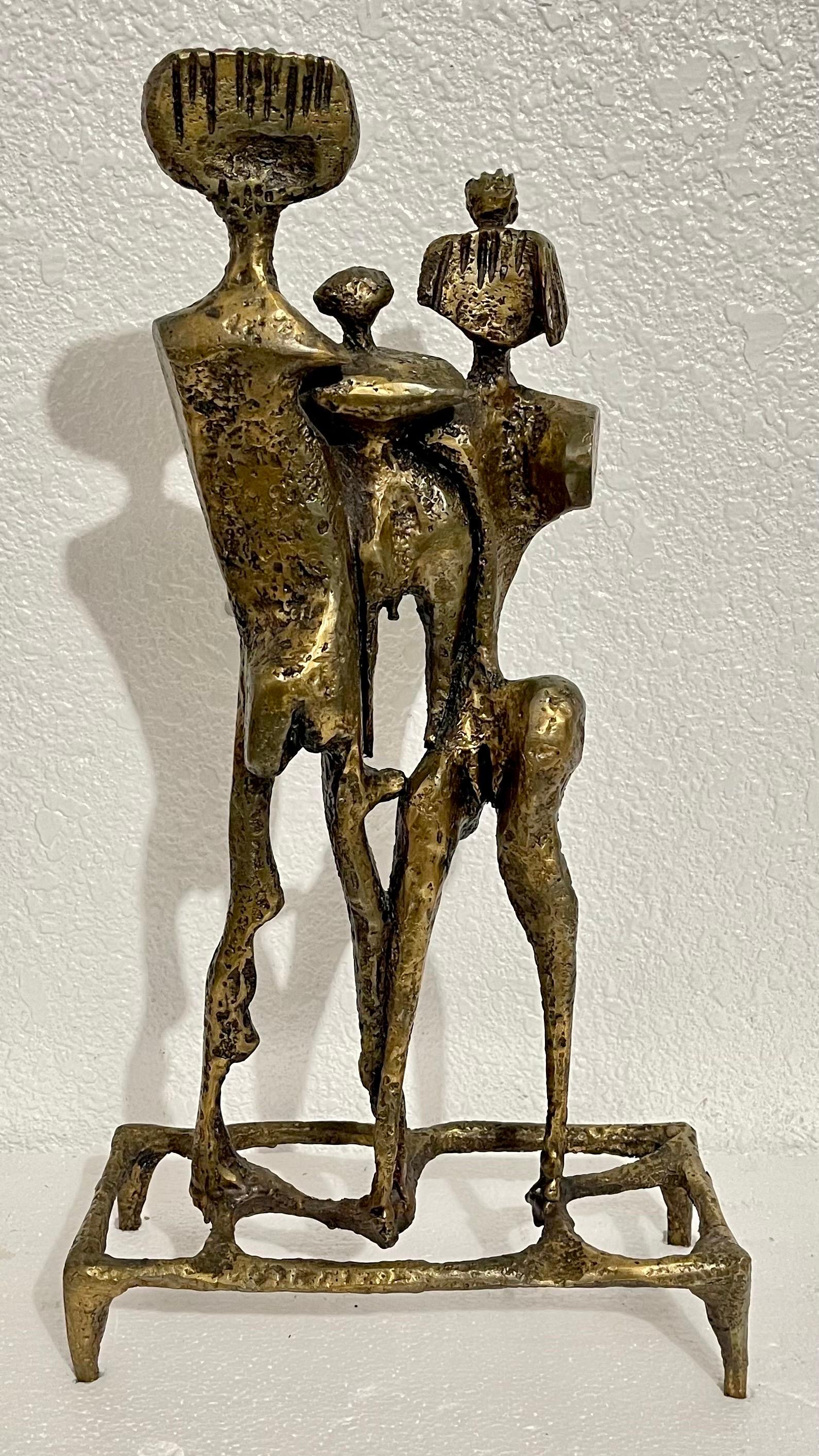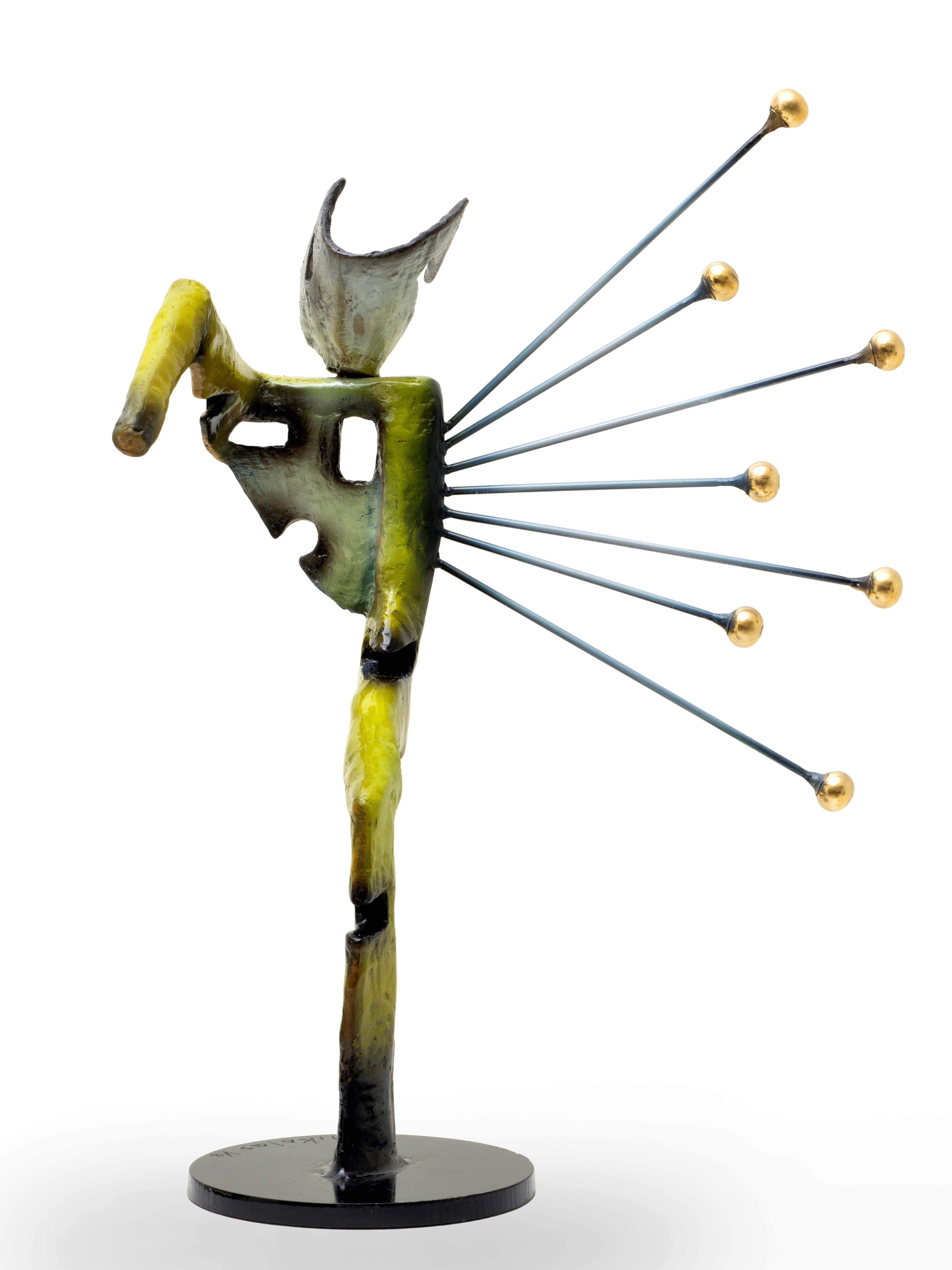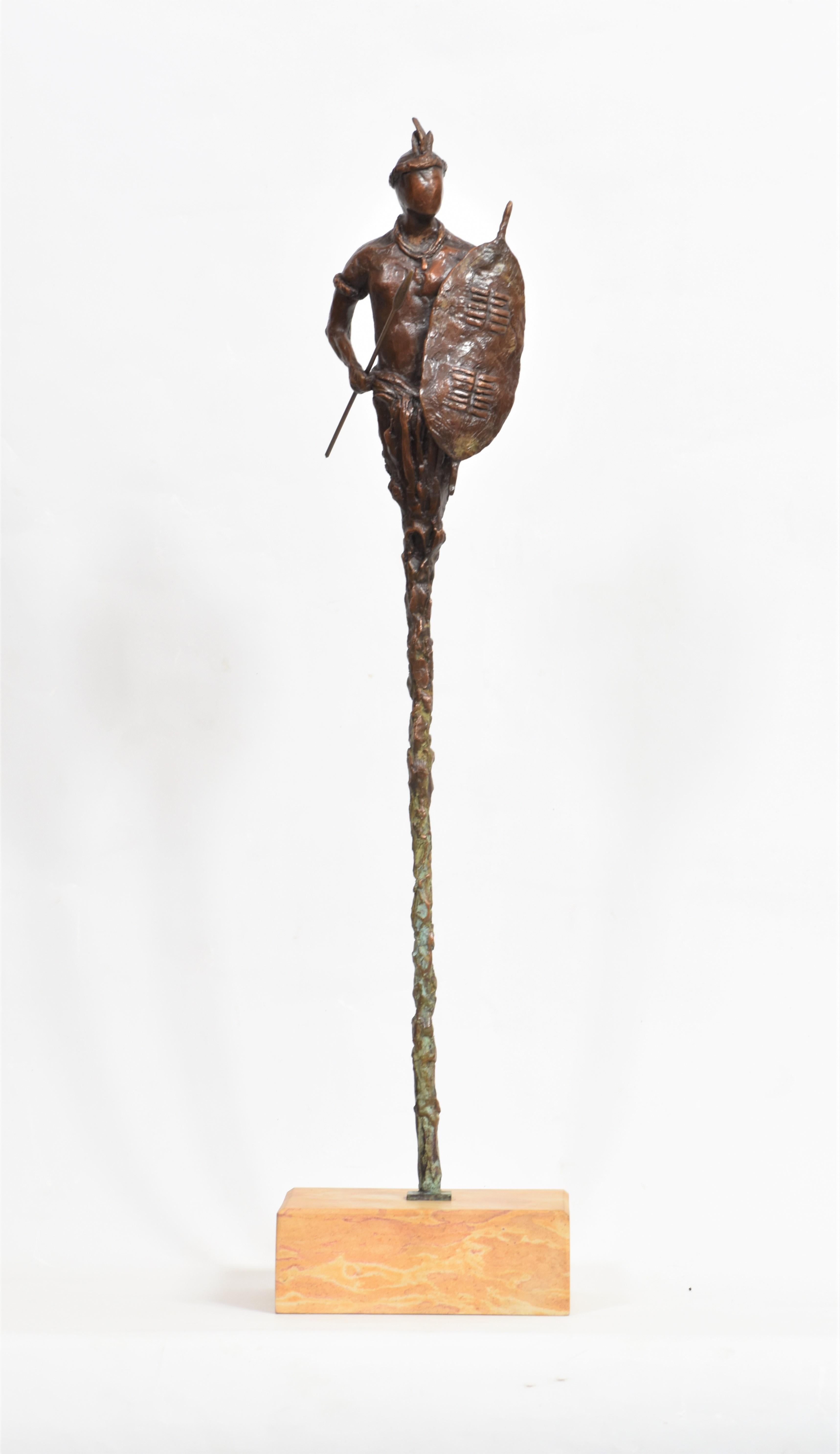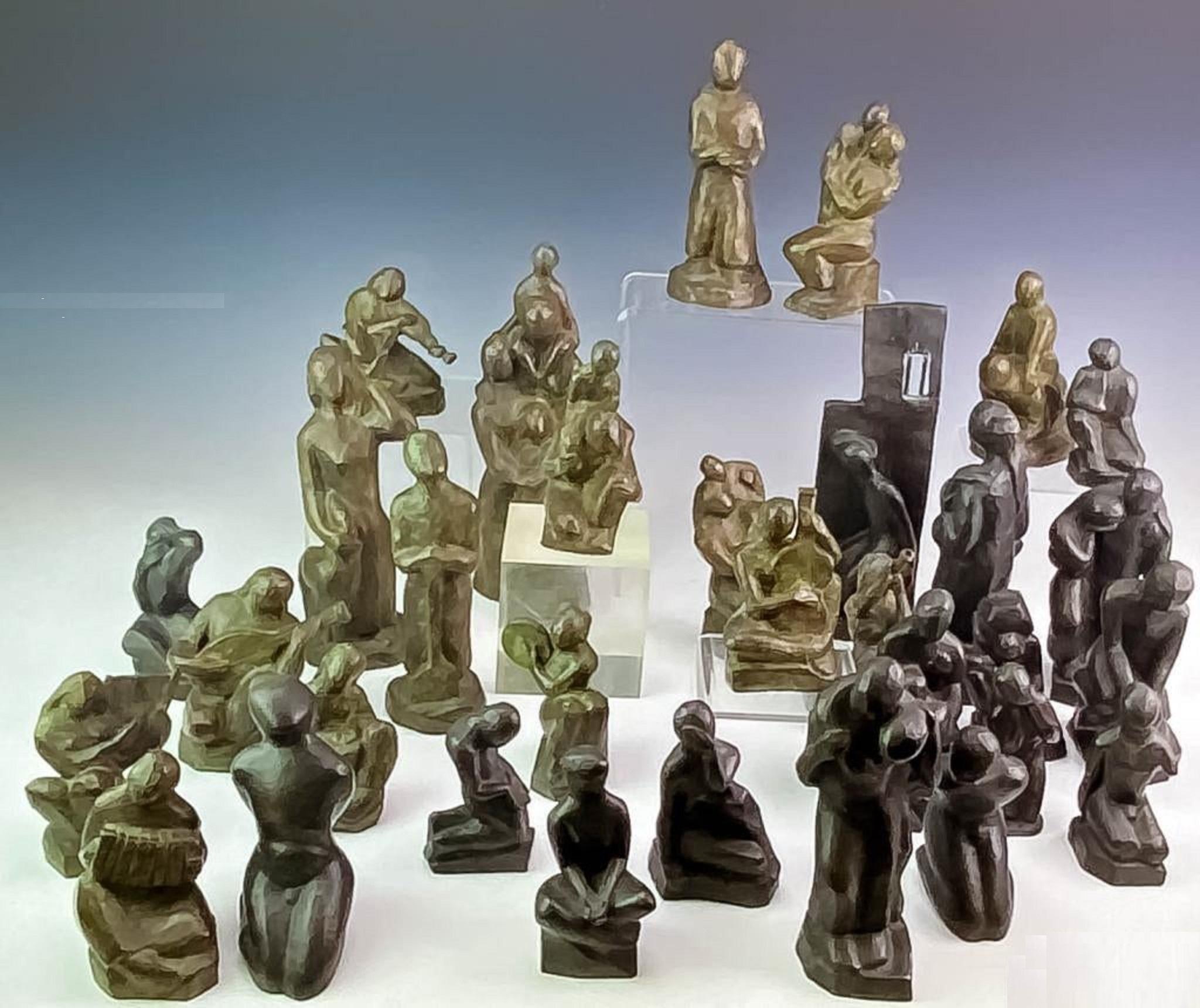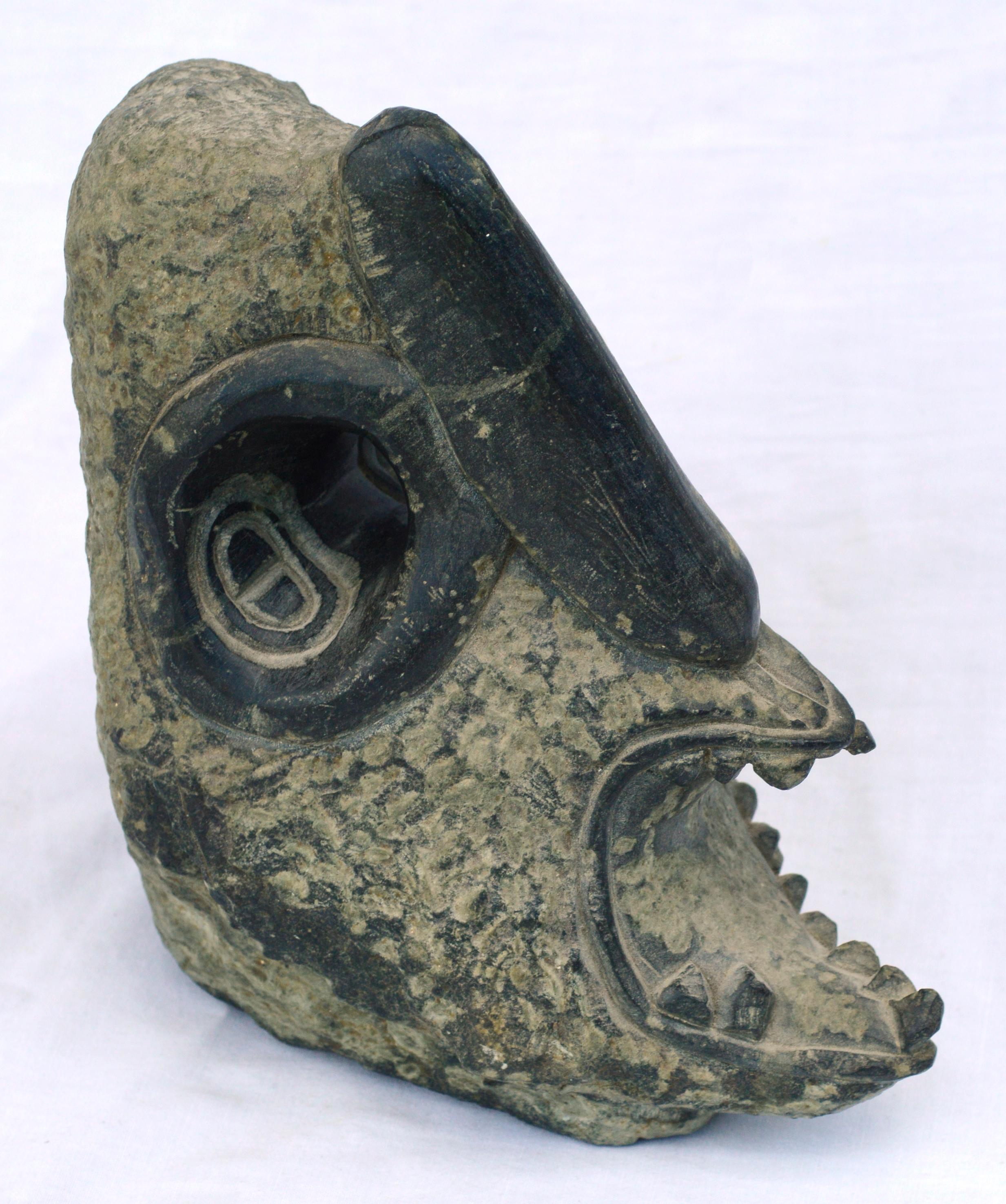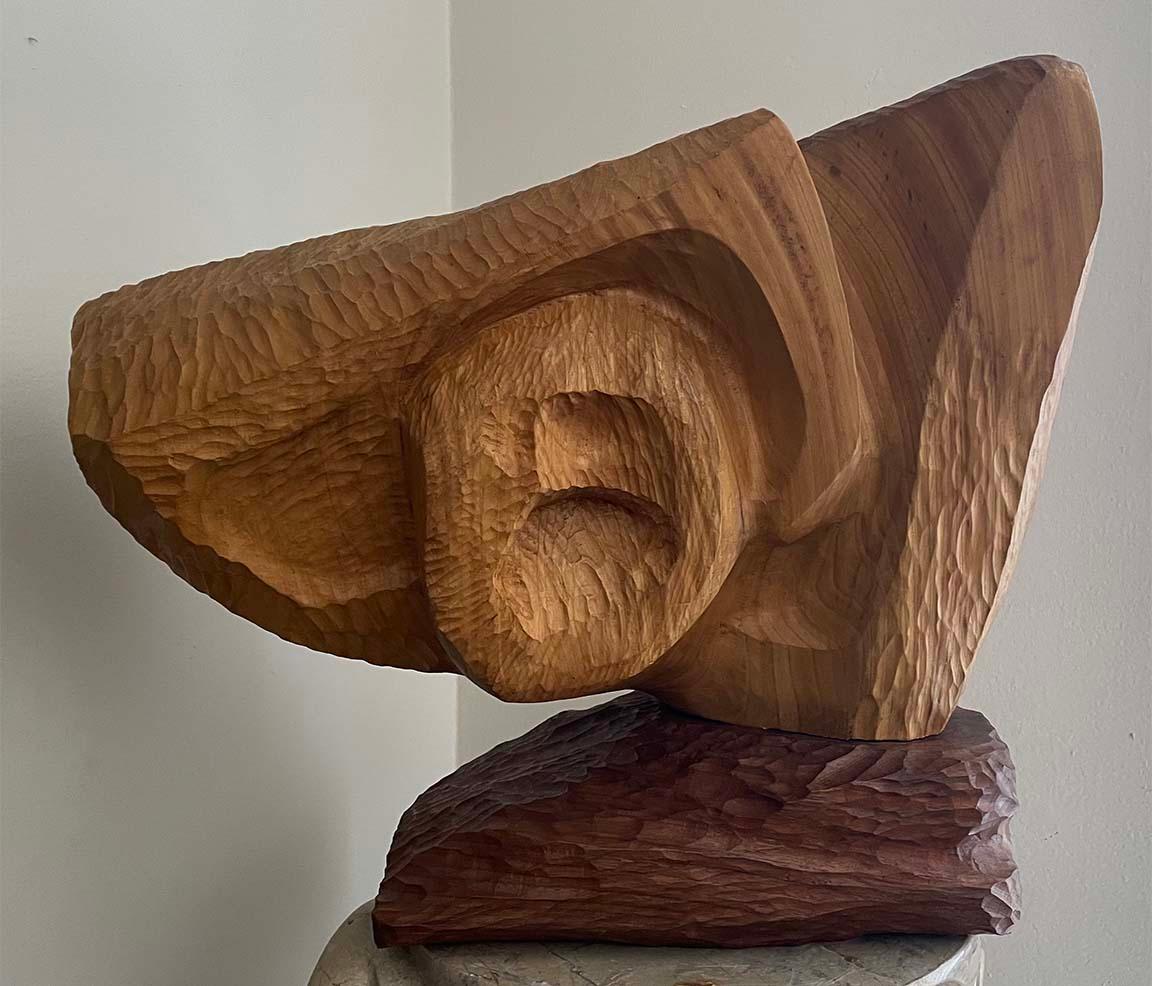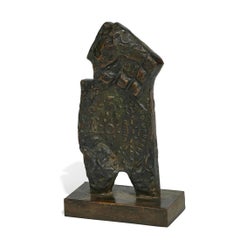
Rachid Khimoune French Algerian Arab Art Brut Bronze Sculpture Abstract Figure
View Similar Items
Want more images or videos?
Request additional images or videos from the seller
1 of 5
Rachid KhimouneRachid Khimoune French Algerian Arab Art Brut Bronze Sculpture Abstract Figure
About the Item
- Creator:Rachid Khimoune (1953)
- Dimensions:Height: 8.25 in (20.96 cm)Width: 4.63 in (11.77 cm)Depth: 2.38 in (6.05 cm)
- Medium:
- Movement & Style:
- Period:
- Condition:good condition. Casting and pitting marks inherent. Light wear to base.
- Gallery Location:Surfside, FL
- Reference Number:1stDibs: LU3827955852
About the Seller
4.9
Platinum Seller
These expertly vetted sellers are 1stDibs' most experienced sellers and are rated highest by our customers.
Established in 1995
1stDibs seller since 2014
1,560 sales on 1stDibs
Typical response time: 1 hour
More From This SellerView All
- Large Aharon Bezalel Israeli Modernist Bronze Brutalist Puzzle Sculpture FiguresBy Aharon BezalelLocated in Surfside, FLAharon Bezalel (Afghani-Israeli, 1925-2012) Family Grouping Hand signed in with initials in English Figures fit together like puzzle pieces in solid cast bronze with original patina. Aharon Bezalel (born Afghanistan 1926) Born in Herat, Afghanistan in 1926 and immigrated to Israel at an early age. His father, Reuven Bezalel, was a rabbi and kabbalist. As a youth Aharon studied gold and silver casting as well as applied arts and worked in these fields as a silversmith and judaica craftsman, and was a student of the sculptor Zev Ben-Zvi at the Bezalel Academy for Art & Design where he also studied with Isidor Ascheim and Mordecai Ardon. There he absorbed the basic concepts of classic and modernist art and interpreted, according to them, ideas based on ancient Hebrew sources. He also studied miniature carving with the artists Martin and Helga Rost applying himself at their workshop. Aharon Bezalel worked and resided in Jerusalem, he taught art for many years. His sculptures - works of wood, bronze, aluminum, Plexiglas - were shown at his studio in Ein Kerem. “I saw myself as part of this region. I wanted to find the contact between my art and my surroundings. Those were the first years of Jean Piro’s excavations at the Beer-Sheba mound. They found there, for example, the Canaanite figurines that I especially liked and that were an element that connected me with the past and with this place.” “…a seed and sperm or male and female. These continue life. The singular, the individual alone, cannot exist; I learned this from my father who dabbled with the Kabbalah.” (Aharon Bezalel, excerpt from an interview with David Gerstein) “The singular in Aharon Bezalel’s work is always potentially a couple if not a threesome, the one is also the many: when the individual is revealed within the group he will always seek a huddling, a clinging together. The principle of modular construction is required by this perception of unity and multiplicity, as modular construction in his work is an act of conception or defense. His work bears a similarity to Berrocal as well as affinities to Henry Moore, Lynne Chadwick and Kenneth Armitage. Two poles of unity, potentially alone, exist in A. Bezalel’s world: From a formal, sculptural sense these are the sphere and pillar, metaphorically these are the female in the final stages of pregnancy and the solitary male individual. Sphere-seed-woman; Pillar-strand-man. The disproportional, small heads in A. Bezalel figures leave humankind in it’s primal physical capacity. The woman as a pregnancy or hips, the man as an aggressive or defensive force, the elongated chest serves as a phallus and weapon simultaneously. (Gideon Ofrat) EIN HAROD About the Museum's Holdings: Israeli art is represented by the works of Reuven Rubin, Zaritzky, Nahum Gutman...Category
Mid-20th Century Expressionist Abstract Sculptures
MaterialsBronze
- Large Aharon Bezalel Israeli Modernist Bronze Brutalist Puzzle Sculpture FiguresBy Aharon BezalelLocated in Surfside, FLAharon Bezalel (Afghani-Israeli, 1925-2012) 1984 Edition 4/9 Family Grouping Hand signed in Hebrew with initials and in English Movable figures that fit together like puzzle pieces in solid cast bronze with original patina on a lucite bench base. 23 X 19 X 6 base is 24 X 6 X 6 Aharon Bezalel (born Afghanistan 1926) Born in Herat, Afghanistan in 1926 and immigrated to Israel at an early age. His father, Reuven Bezalel, was a rabbi and kabbalist. As a youth Aharon studied gold and silver casting as well as applied arts and worked in these fields as a silversmith and judaica craftsman, and was a student of the sculptor Zev Ben-Zvi at the Bezalel Academy for Art & Design where he also studied with Isidor Ascheim and Mordecai Ardon. There he absorbed the basic concepts of classic and modernist art and interpreted, according to them, ideas based on ancient Hebrew sources. He also studied miniature carving with the artists Martin and Helga Rost applying himself at their workshop. Aharon Bezalel worked and resided in Jerusalem, he taught art for many years. His sculptures - works of wood, bronze, aluminum, Plexiglas - were shown at his studio in Ein Kerem. “I saw myself as part of this region. I wanted to find the contact between my art and my surroundings. Those were the first years of Jean Piro’s excavations at the Beer-Sheba mound. They found there, for example, the Canaanite figurines that I especially liked and that were an element that connected me with the past and with this place.” “…a seed and sperm or male and female. These continue life. The singular, the individual alone, cannot exist; I learned this from my father who dabbled with the Kabbalah.” (Aharon Bezalel, excerpt from an interview with David Gerstein) “The singular in Aharon Bezalel’s work is always potentially a couple if not a threesome, the one is also the many: when the individual is revealed within the group he will always seek a huddling, a clinging together. The principle of modular construction is required by this perception of unity and multiplicity, as modular construction in his work is an act of conception or defense. His work bears a similarity to Berrocal as well as affinities to Henry Moore, Lynne Chadwick and Kenneth Armitage. Two poles of unity, potentially alone, exist in A. Bezalel’s world: From a formal, sculptural sense these are the sphere and pillar, metaphorically these are the female in the final stages of pregnancy and the solitary male individual. Sphere-seed-woman; Pillar-strand-man. The disproportional, small heads in A. Bezalel figures leave humankind in it’s primal physical capacity. The woman as a pregnancy or hips, the man as an aggressive or defensive force, the elongated chest serves as a phallus and weapon simultaneously. (Gideon Ofrat) EIN HAROD About the Museum's Holdings: Israeli art is represented by the works of Reuven Rubin, Zaritzky, Nahum Gutman...Category
Mid-20th Century Expressionist Abstract Sculptures
MaterialsBronze
- Liberty vs Slavery Van Loen Bronze Abstract Chess Set Modernist Museum SculptureBy Alfred Van LoenLocated in Surfside, FLAlfred Van Loen signed 32 piece chess set. In heavy solid bronze. Rare Chess Game: Liberty versus Slavery Dimensions: a) Joy-Tenderness H. 6 3/16 in. a...Category
1960s Expressionist Abstract Sculptures
MaterialsBronze
- Carved Wood German Expressionist Sculpture Jewish Woman Refugee Artist JudaicaBy Miriam SommerburgLocated in Surfside, FLMiriam Sommerburg (American female artist, born Germany, Hamburg, 1900–1980 New York) Modernist Wood Carved Sculpture, Carving depictin...Category
Mid-20th Century Expressionist Figurative Sculptures
MaterialsWood
- Mexican Art Abstract Brutalist Biomorphic Bronze Sculpture Mathias GoeritzBy Mathias GoeritzLocated in Surfside, FLMathias Goeritz (German Mexican, 1915-1990) Bronze sculpture Signed and numbered Dimensions: (approximate) Height: 10 inches, Width: 4 inches, Depth: 2 inches. This is a cast bronze sculpture in an amorphous figure shape, quite heavy. Reminiscent of the biomorphic sculpture of Hans Jean Arp. This came from an estate and bears his signature It is not dated. there is no accompanying documentation. it is priced accordingly. Werner Mathias Goeritz Brunner (Danzig, Germany, April 4th, 1915/ now Gdansk, Poland – Mexico City, Mexico; August 4th, 1990). Mathias Goeritz has had several gallery and museum exhibitions, including at the Museo Nacional Centro de Arte Reina Sofía and at the Museo Experimental El Eco. Numerous works by the artist have been sold at auction, including 'MENSAJE' sold at Sotheby's New York 'Latin American Modern Art' in 2015 for $466,000. There have been Several articles about Mathias Goeritz, including 'LACMA remaps Latin America' written by Suzanne Muchnic for the Los Angeles Times. Painter, sculptor and Mexican architect associated with the trend of constructive abstraction. He studied medicine at the University of Berlin, but this only lasted a year. The concerns of the young student were aesthetic in nature so he he studied figurative drawing at the Berlin Charlottenburg School of Art. Some of his friends and colleagues were the sculptor Ernst Barlach, painter George Grosz and draughtsman Kaethe Kollwitz. Goeritz studied philosophy and history of art, discipline in which earned a doctorate. He travelled in France, Switzerland, Czechoslovakia, Poland, Austria and Italy, among other countries. It is known that he left Germany to live in Tetuan, Morocco in 1941 and then Granada, Spain in 1945. In 1946 he had a large exhibition in the Sala Clan in Madrid under the pseudonym "Mago". Two years later, living in Santilla del Mar, Spain he was a founder of the Escuela de Altamira. The following year he married Marianne Gast, writer and his companion for more than fifteen years. In Spain followed his artistic work by important artists of the avant-garde. Of Jewish descent, he found refuge from the Second World War in Mexico where in 1949 he was invited by Ignacio Diaz Morales to be a part of the faculty of the School of Architecture at the Universidad de Jalisco. In 1953 he wrote the "Manifiesto de la Arquitectura Emocional" (The Emotional Architecture Manifesto), where he points out that only achieving true emotions from architecture can it then be considered an art form. In Mexico he entered controversy with the artistic stablishment of that country; in an open letter, Diego Rivera and David Alfaro Siqueiros described him as "an impostor without the most insignificant talent and preparation" to be an artist. Despite this, in 1957 he was elected director of visual design of the National School of architecture This same year he founded the Museo del Eco in Mexico City. In 1961 Goeritz participated at the Galería Antonio Souza in a group exhibition, Los hartos, for which he published another manifesto. Other participants included Jose Luis Cuevas and Pedro Friedeberg, with whom he was instrumental in establishing abstraction and other modern trends in Mexico.His work is included in the Gelman Collection of modern and contemporary Mexican art based in Cuernavaca, Mexico. Established by Jacques and Natasha Gelman in 1943 as a private collection. it includes many iconic works by major Mexican Modernists including Frida Kahlo, Diego Rivera, David Alfaro Siqueiros, Leonora Carrington, Rufino Tamayo and Francisco Toledo, Lola Alvarez...Category
20th Century Modern Abstract Sculptures
MaterialsBronze
- French Pop Art Heavy Bronze Sculpture Chess Game Gambit Arman AccumulationBy ArmanLocated in Surfside, FLArman, French American (1928-2005) Gambit (Chess pieces) Cast Bronze Sculpture with patina Incised signature near lower edge, 48/70 with impressed "Bronze Romain & Fils" foundry ma...Category
Early 2000s Abstract Figurative Sculptures
MaterialsBronze
You May Also LikeView All
- HomodeusLocated in Spetses, GRInspired by the writings of historian Yuval Noah Harari, Homo Deus creates a vision of the future: of Man physically transformed by new technologies to the point of attaining a statu...Category
21st Century and Contemporary Expressionist Abstract Sculptures
MaterialsBronze
- Maasai Warrior - African Sculpture in Bronze Verdigris - Limited EditionLocated in Pretoria, ZAMaasai Warrior in Bronze Verdigris on Sandstone base, limited edition of 24 (signed and numbered); H 76 cm including base. Having been a professional safari guide, my art is influenc...Category
2010s Expressionist Figurative Sculptures
MaterialsSandstone, Bronze
- Zulu Warrior - African Bronze Sculpture - Limited EditionLocated in Pretoria, ZAZulu Warrior in Bronze with traditional patina. Limited edition of 24 (signed & numbered), Sculpture in Bronze Verdigris on Sandstone base. Height 70 cm including base. My art is ins...Category
2010s Expressionist Figurative Sculptures
MaterialsSandstone, Bronze
- Samburu Herdsman - African Tribe Sculpture in Bronze VerdigrisLocated in Pretoria, ZAMy interpretation of a Samburu herdsman stands as a sentinel of tradition, his life a tapestry woven with the threads of pastoral wisdom and the enduring spirit of the African savannah. The Samburu people of Kenya possess a deeply symbiotic relationship with elephants, observing and understanding them in remarkable ways that mirror their own societal structures. They share a common matriarchal social system with elephants, where both Samburu and elephant herds are led by a female elder who holds the knowledge and responsibility for the group's survival. This unique parallel has fostered a profound respect and protection for these majestic creatures within the Samburu culture. Samburu Herdsman, Limited edition of 24, Bronze sculpture on sandstone base in Bronze Verdigris, Height 65 cm including Sandstone base. Bronze sculpture using the lost was method. My art is inspired by Africa and it’s magnificent wildlife and people. My figurative East African tribal sculpture...Category
2010s Expressionist Figurative Sculptures
MaterialsBronze
- Zulu Warrior - African Sculpture in Bronze Verdigris - Limited EditionLocated in Pretoria, ZAZulu Warrior in Bronze Verdigris, limited edition of 24 (signed & numbered), Sculpture in Bronze Verdigris on Sandstone base. Height 70 cm including base. My art is inspired by Afric...Category
2010s Expressionist Figurative Sculptures
MaterialsBronze
- Martenita Tribute to Picasso Murano Glass SculptureBy Walter FurlanLocated in Lake Worth Beach, FLMartenita Omaggio To Picasso, Signed, artist logo stamp, and title. Walter Furlan was born (1931-2018) in Chioggia, a small town near Venice. He started to work in a furnace calle...Category
Early 2000s Expressionist Figurative Sculptures
MaterialsGlass, Blown Glass
Recently Viewed
View AllMore Ways To Browse
Paris Art Bronze
Large Figure Sculpture
Machined Metal Art
Vintage French Bronze Sculpture
Vintage Mexican Sculpture
Bronze L Sculpture
Large Bronze Sculpture French
Bronze Face Sculpture
Metal Figural Sculpture
Metal Figure Sculpture
Mouth Sculpture
Face Sculpture Gold
Vintage Statues Art Sculptures
Warrior Sculpture
Bronze Sculpture Tree
Abstract Totem Sculpture
Drinking Sculptures
Golden Bronze Sculpture
